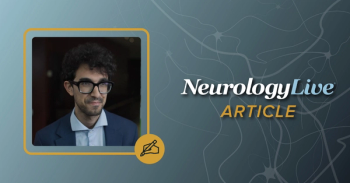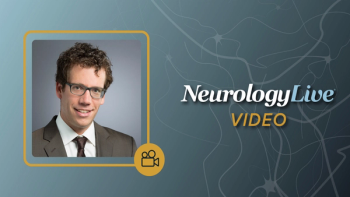
Autologous Hematopoietic Stem Cell Transplantation Safe in Aggressive MS
Researchers observed statistically significant improvements of the EDSS score along with a majority of patients showing no new enlarging or gadolinium-enhancing MRI lesions.
Recently published results from a cohort of 20 patients with multiple clinical and radiological features predictive of “aggressive” multiple sclerosis (MS) revealed that treatment with autologous hematopoietic stem cell transplantation (AHSCT) is safe and effective as a first-line disease-modifying therapy (DMT).
Despite previous research supporting AHSCT as an effective treatment for patients with highly active MS, the optimal time for offering AHSCT had yet to be established. Senior author Basil Sharrack, MD, PhD, FRCP, professor of clinical neurology, Sheffield University, and colleagues explored the safety and efficacy of AHSCT as a first-line DMT across the aforementioned cohort in 5 European and North American centers.
At the last follow-up appointment, the post-transplant median Expanded Disability Status Scale (EDSS) score was 2.0 (range, 0-6.5), with only 1 patient not recording a change after treatment. EDSS score of 13 patients plateaued after the initial 6 months, whereas scores of 5 patients continued to improve beyond this period.
"To the best of our knowledge, this is the largest cohort of patients with ‘aggressive’ MS who received AHSCT as a first-line DMT. The treatment was safe and highly effective in inducing rapid and sustained disease remission with a significant improvement of disability. Further studies are required to confirm these initial findings,” Sharrack et al concluded.
READ MORE:
No clinical relapse following treatment with AHSCT was seen in any of these 20 patients. Overall, no evidence of disease activity (NEDA) was 85% with a median follow-up period of 30 (range, 12-118) months, but 100% after re-baselining magnetic resonance imaging (MRI) disease activities to month 6 post-transplant scans.
One patient had a transient increase, despite the overall improvement of their EDSS score following AHSCT. That patient, along with the patient who did not record a change in EDSS, experienced confirmed disability progression.
No patient received any standard DMTs before AHSCT, which was therefore considered a first-line treatment. Three conditioning regiments were used:
- 4 patients: busulfan, cyclophosphamide 200 mg and rabbit anti-thymocyte globulin 6 mg/kg (Bu-Cy-ATG).
- 4 patients: BCNU (carmustine) 300 mg/m2, etoposide 800 mg/m2m cytosine arabinoside 800 mg/m2, melphalan 140 mg/m2 and rabbit anti-thymocyte globulin 7.5-10 mg/kg (BEAM-ATG).
- 12 patients: cyclophosphamide 200 mg/kg and rabbit anti-thymocyte globulin 6-7.5 mg/kg (Cy-ATG).
There was an equal proportion of male and females with a median age of 28 (range, 17-47) years at diagnosis and a median interval of 5 (range, 1-20) months between diagnosis and treatment. The median last EDSS score before transplant was 5 (range, 1.5-9.5).
Sharrack and colleagues found an overall improvement of 2.25 (range, 0-6.5) in the EDSS scores, which was statistically significant (P <.001) on Wilcoxon signed-rank test. Subgroup analysis showed that this improvement was also statistically significant in males (P = .005) and females (P = .008), and in patients treated with the Cy-ATG conditioning regimen (P = .003).
Following AHSCT, 17 patients reported no new enlarging or gadolinium-enhancing magnetic resonance imaging (MRI) lesions. Three patients had new lesions with or without gadolinium enhancement on their first MRI scans, which were performed within 6 months post-AHSCT. Of them, 1 had 2 new T2 lesions, 1 had a new T2 and a new gadolinium-enhancing lesion, and 1 had a single new gadolinium-enhancing lesion. Researchers noted, however, that during their subsequent follow-ups (23, 36, and 84 months), there were no new lesion or gadolinium-enhancing lesion activity among.
Sharrack et al’s research comes on the heels of
REFERENCES
1. Das J, Snowden JA, Burman J, et al. Autologous haematopoietic stem cell transplantation as a first-line disease-modifying therapy in patients with ‘aggressive’ multiple sclerosis. Mult Scler J Exp Transl Clin. Published online February 10, 2021.
2. Boffa G, Massacessi L, Inglese M, et al. Long-term clinical outcomes of hematopoietic stem cell transplantation in multiple sclerosis. Neurology. Published online January 20, 2021. doi: 10.1212/WNL.0000000000011461
Newsletter
Keep your finger on the pulse of neurology—subscribe to NeurologyLive for expert interviews, new data, and breakthrough treatment updates.



























